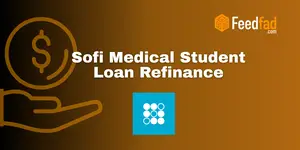
When you apply for a loan or mortgage, your income becomes more than just a number—it’s the key that unlocks borrowing potential. Lenders examine earnings to ensure you can meet your commitments without risking financial stability. By understanding this process, you can position yourself to secure better terms, lower rates, and even expand your borrowing capacity.
At its core, income verification is the procedure lenders use to confirm that your stated earnings are accurate and reliable. This may involve checking paystubs, tax returns, bank statements, or using electronic systems that connect directly to your employer’s payroll database.
For lenders, this verification acts as a critical risk assessment tool. It’s more than a formality—it’s a reassurance that borrowers possess the means to satisfy monthly payments alongside existing obligations.
Once your income is verified, lenders calculate how much you can borrow. This amount depends on your overall financial profile, but verified earnings serve as the backbone for those calculations.
Imagine two applicants with identical credit scores. The one whose income flows through recognized channels—regular paystubs, employer-verified statements, or consistent bank deposits—will almost always receive a higher borrowing limit and a more favorable interest rate.
This dynamic highlights the ability to meet future payments as a primary driver of loan terms. When lenders see a stable, documented income stream, they’re more comfortable offering larger loans at competitive rates.
One of the most influential figures in lending decisions is your debt-to-income ratio, or DTI. It measures the portion of your gross monthly income needed to cover debts.
Common guidelines include the “28/36 rule,” which suggests no more than 28% of income should go to housing expenses, and no more than 36% to all debt obligations combined. Keeping your DTI low demonstrates financial balance and discipline.
Beyond DTI, lenders evaluate factors such as employment history, credit score, and reserves. A robust application typically highlights:
By maintaining a favorable debt-to-income ratio thresholds, you send a clear message of reliability and preparedness.
The lending industry has evolved, embracing digital solutions that streamline income checks. Instead of manually collecting paperwork, many lenders use payroll integrations and financial-data aggregators to verify income in minutes.
Some cutting-edge institutions deploy machine learning income validation algorithms. These systems compare your declared earnings against industry benchmarks, cross-referencing occupation, location, and tenure. If your numbers align within acceptable margins, your file moves swiftly toward approval.
For gig workers or freelancers, alternative documentation—like consistent bank statement patterns and tax filings—can substitute for traditional paystubs, provided they paint a clear, continuous history of earnings.
When income cannot be verified, or if discrepancies arise, applications may stall or face outright denial. Lenders need assurance; missing documentation or suspicious anomalies raise red flags.
Common outcomes include:
Falsifying income carries serious legal and financial risks. Beyond losing approval, borrowers can encounter legal consequences, damaged credit, and lost trust.
Let’s explore real-world situations to illustrate how income verification shapes borrowing power:
Understanding these scenarios empowers you to anticipate lender concerns and prepare accordingly. Gathering documentation early and ensuring consistency across sources can prevent delays.
To maximize your borrowing capacity, consider these actionable steps:
By adopting strong self-employed documentation practices and minimizing red flags, you’ll present the most compelling case to any lender.
Ultimately, the journey to securing a loan is a partnership. When you share transparent, verifiable information, lenders reciprocate with trust, competitive rates, and greater flexibility. Embrace the process, fortify your financial profile, and step confidently toward your goals—whether that means buying a home, expanding a business, or consolidating high-interest debt.
With diligence, preparation, and informed strategy, you can transform your income records from a mere requirement into a powerful tool—one that not only validates your capacity but also maximizes borrowing capacity and opportunities for the future.
References













